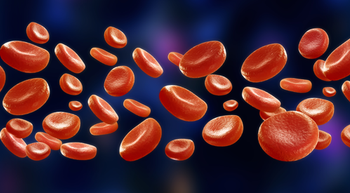
Survivors of Childhood Cancer Have Increased Skin Cancer Risk
Compared to the general population, survivors of childhood cancer who live 5 or more years from diagnosis are at a higher risk for skin cancer.
Childhood cancer survivors who had lived 5 or more years from their primary malignancy are at an increased risk of developing skin cancer compared with the general population, according to results from the DCOG-LATER cohort study.1,2
Among the cohort, the most common skin malignancies that were identified included basal cell carcinoma, melanoma, and squamous cell carcinoma. Patients who developed basal cell carcinoma were 30-times more likely to develop the malignancy compared with the general population, whereas those who developed melanoma and squamous cell carcinoma had over a 2-fold and 7-fold risk of developing the diseases, respectively.
A total of 5843 Dutch childhood cancer survivors who had been diagnosed between 1963 and 2001 were included in the cohort. Overall, 259 patients developed 1061 cases of basal cell carcinoma (standardized incidence ratio [SIR], 29.8; 95% CI, 26.3-33.6; excess absolute risk per 10,000 person-years [EAR], 24.6). Further, 20 patients developed 27 cases of melanoma (SIR, 2.3; 95% CI, 1.4-3.5; EAR, 1.1) and 10 patients developed 11 cases of squamous cell carcinoma (SIR 7.5; 95% CI, 3.6-13.8; EAR, 0.8).
Due to the risk of secondary skin cancer among childhood cancer survivors, investigators noted that increased awareness may have led to more screening and subsequent detection rates of these malignancies relative to the general population.
The development of a secondary skin malignancy was taken from record linkages with the Netherlands Cancer Registry and Dutch Pathology Registry. Incidence rates were then compared with general population rates using multivariable Cox regression models and case-controlled sampling.
Approximately 40% of the total population received radiation as part of their initial treatment. Subsequent analysis illustrated an increased risk of basal cell carcinoma with prior exposure to radiotherapy to the skin (HR, 14.32; 95% CI, 10.10-20.29). Investigators also observed an added risk the greater the surface area of skin that was exposed to radiation therapy.
“Radiotherapy treatment for childhood cancer involves exposure to ionizing radiation that is able to cause damage in the DNA of cells,” said lead study author Jop C. Teepen, PhD, a postdoctoral researcher of the Princess Maxima Center for Pediatric Oncology, in a press release.
Moreover, individuals who had been treated with radiation therapy and went on to develop skin cancer had a higher likelihood of developing the cancer at the treated site rather with anywhere else on the body.
“This property of ionizing radiation is essential in killing the cancer cells, but can also cause DNA damage to surrounding tissues that inevitably also receive some level of radiation exposure during radiotherapy, for example the skin,” wrote Teepen in the press release. “DNA damage can increase the chance of developing [skin] cancer later in life.”
The risk for secondary skin cancer was compounded by cranial radiation therapy. Regarding prior exposure to chemotherapy, only vinca alkaloids were found to increase the risk of basal cell carcinoma (HR, 1.54; 95% CI, 1.04-2.27).
However, the risk may be lower now than it was when the study population was treated, as radiation fields are now better equipped to spare surrounding normal tissue, noted Kirsten Ness, PT, PhD, FAPTA, a researcher at St. Jude Children’s Research Hospital.
Nonetheless, Ness recommended that childhood cancer survivors wear sunscreen and limit sun exposure. “Check your skin, particularly in areas that received radiation,” stressed Ness as a proactive precaution.
This article originally appeared on
References
1. Childhood cancer survivors at high risk for skin malignancies. Reuters. Published March 8, 2019. https://reut.rs/2EWTftk. Accessed March 12, 2019.
2. Teepen JC, Kok JL, Kremer LC, et al. Long-term risk of skin cancer among childhood cancer survivors: a DCOG-LATER cohort study [published online February 25, 2019]. J Natl Cancer Inst. doi: 10.1093/jnci/djy212.
Newsletter
Knowledge is power. Don’t miss the most recent breakthroughs in cancer care.

















































































